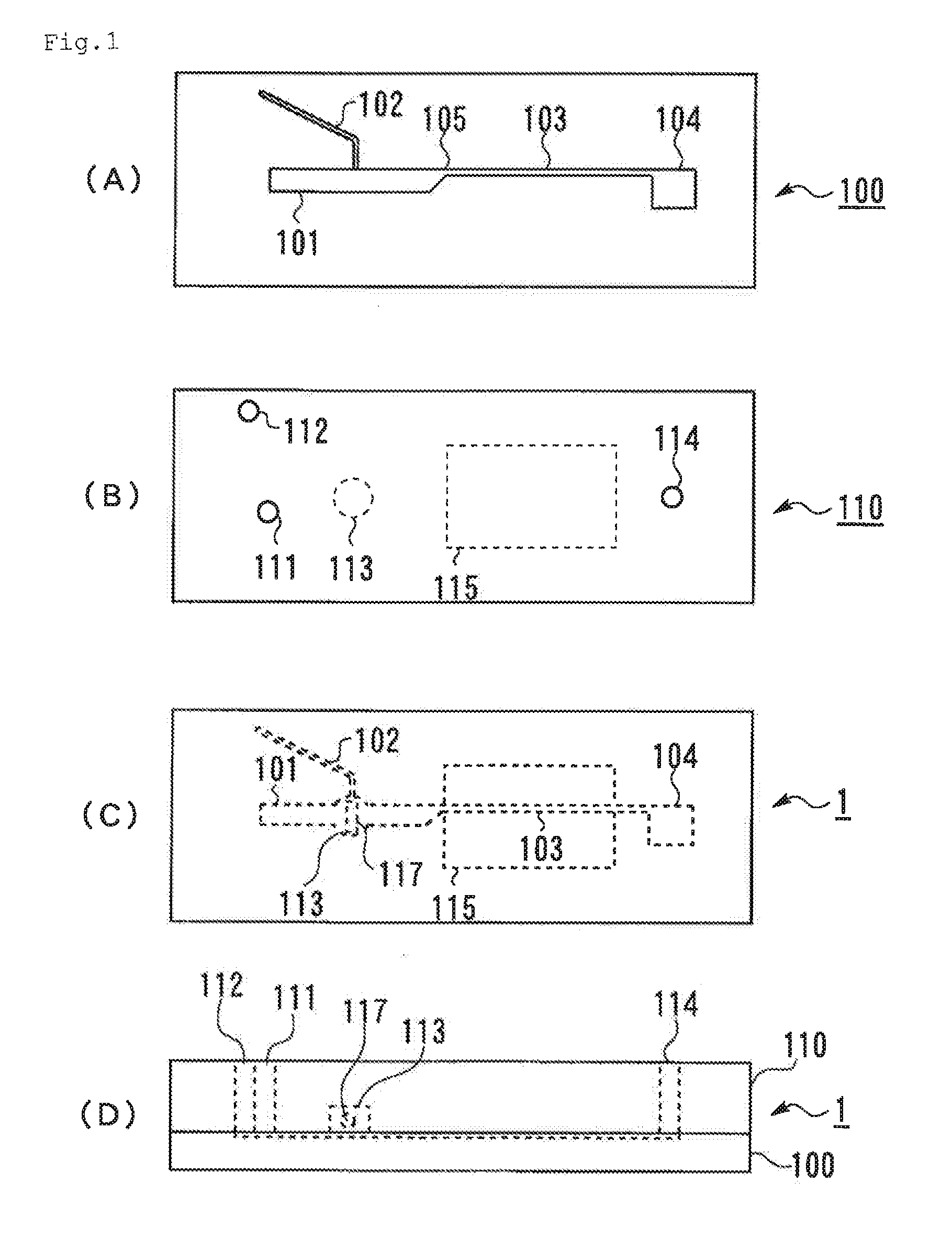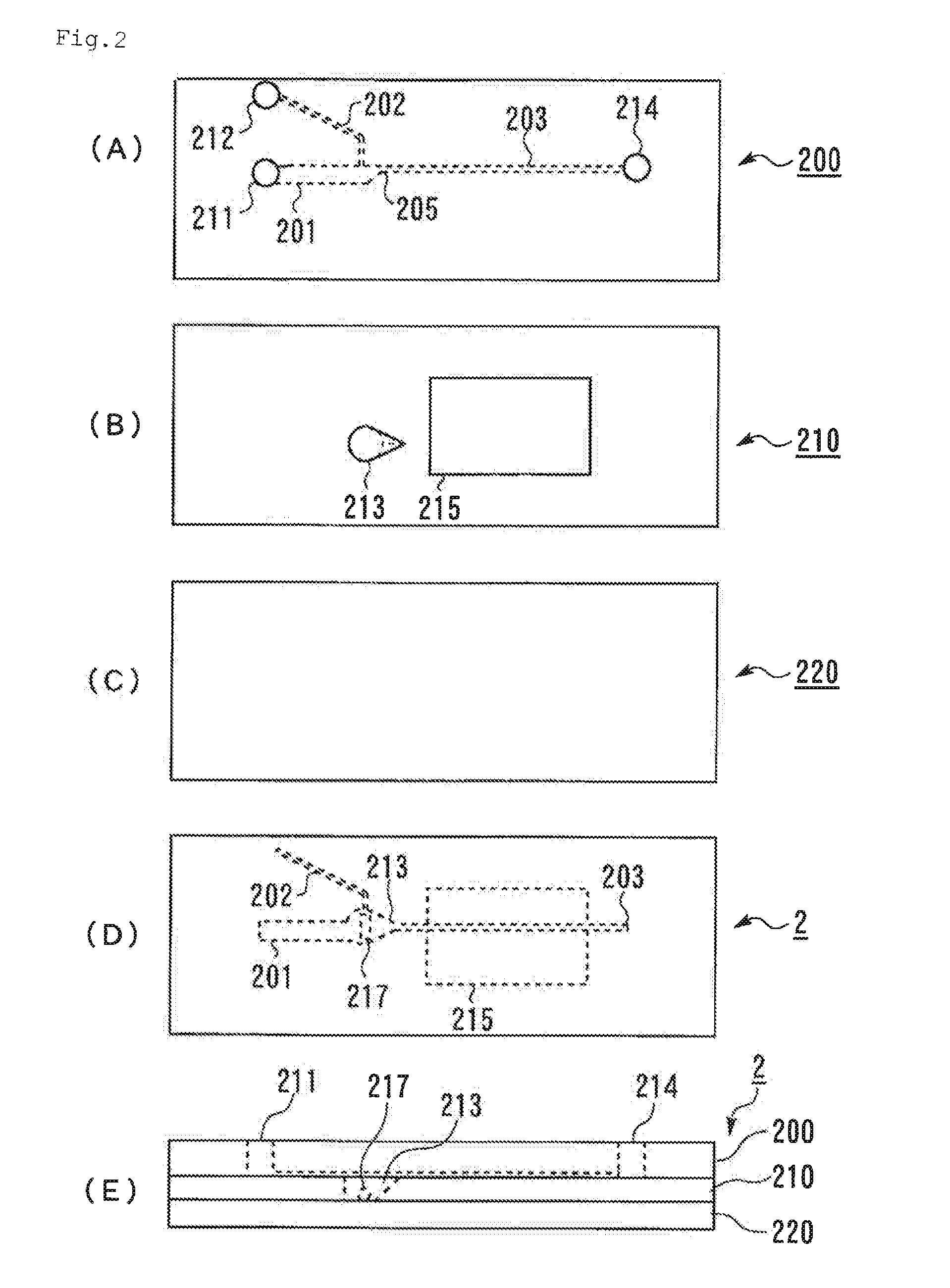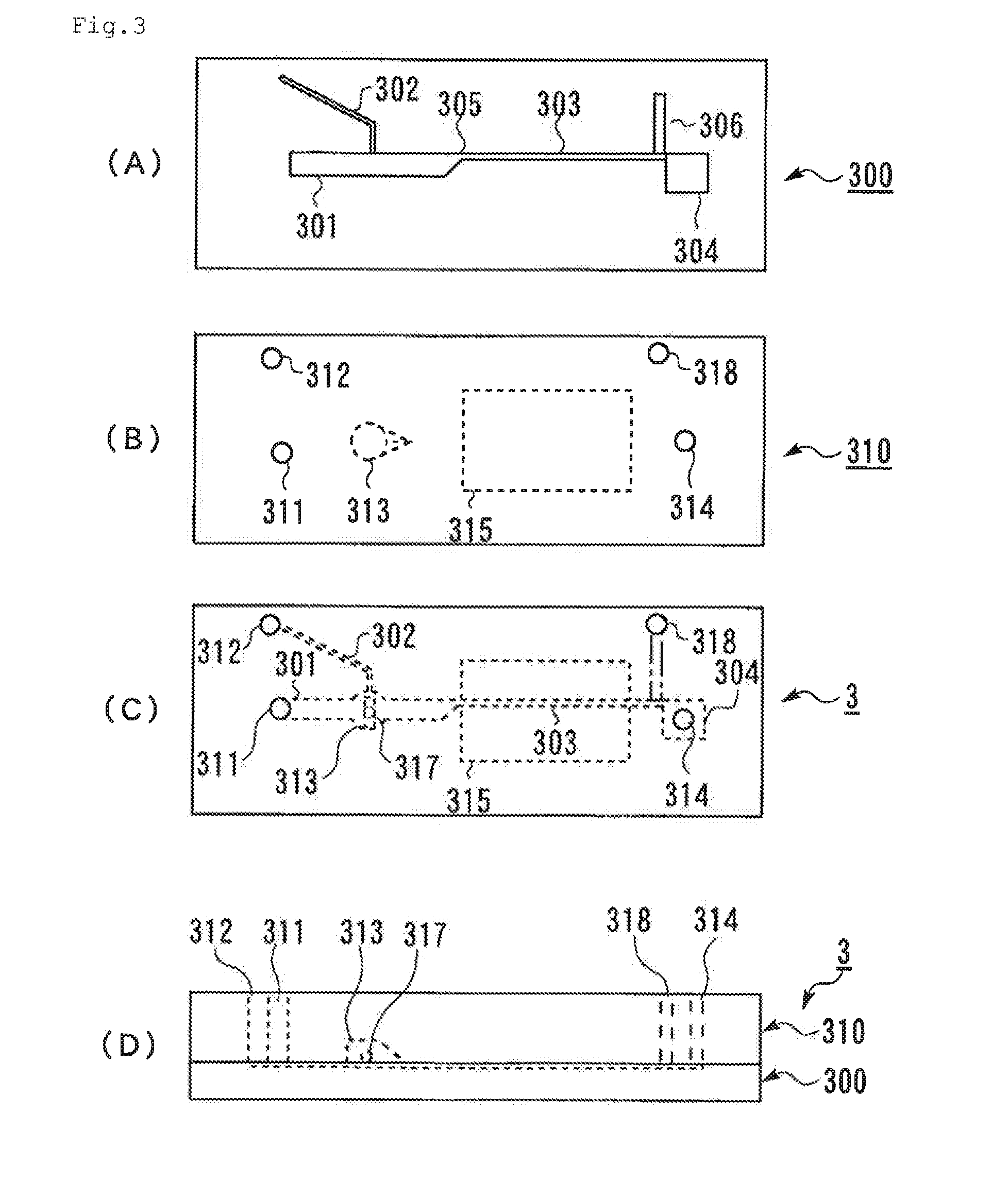Microchip and blood monitoring device
- Summary
- Abstract
- Description
- Claims
- Application Information
AI Technical Summary
Benefits of technology
Problems solved by technology
Method used
Image
Examples
example 1
[Preparation of Microchip and Blood Monitoring Device]
[0224]Two transparent substrates, that is, the first substrate 100 shown in FIG. 1A and the second substrate 110 shown in FIG. 1B (injection-molded products manufactured by Richell Corporation) were prepared. The first substrate 100 and the second substrate 110 were laminated with each other using an adhesive such that the side of the first substrate 100 where the channels open and the side of the second substrate 110 where the hole constituting the stirring section 113 opens face to each other, to provide the microchip 1 shown in FIG. 1C and FIG. 1D. The depth of each channel was 0.12 mm, the width of the first channel 101 was 1.2 mm, and the width of the narrowing section of the merged channel 103 was 0.3 mm. As the stirring bar 117, an iron cylinder coated with PVLA, having a diameter of 1 mm and a length of 2 mm was placed in the stirring section 113. The hole constituting the stirring section 113 was a penetrating hole whose...
example 2
[Preparation of Microchip]
[0229]Two transparent substrates, that is, the first substrate 200 shown in FIG. 2A and the second substrate 210 shown in FIG. 2B (injection-molded products manufactured by Fluidware) and the third substrate 220 shown in FIG. 2C which is a transparent acrylic plate were prepared. The first substrate 200 and the second substrate 210 were laminated with each other using an adhesive such that the side of the first substrate 200 where the channels open and the side of the second substrate 210 where the hole constituting the stirring section 213 opens face to each other. The opening of the hole of the stirring section 213 of the second substrate 200 was closed by the third substrate 220 using an adhesive, to provide the microchip 2 shown in FIG. 2D and FIG. 2E. The thickness of the second substrate 210 was 1.2 mm, which thickness corresponded to the depth of the hole constituting the stirring section 213. The shape of the hole constituting the stirring section 2...
example 3
[0232]The microchip 2 and a blood monitoring device were prepared in the same manner as in Example 2 except that the stirring section 213 of the second substrate 210 in Example 2 was simply a circular penetrating hole having an inner diameter of 3 mm. Experiments to confirm the state of mixing were carried out in the same manner as in Example 2. As a result, the two liquids were uniformly mixed with each other, but in some cases, air remained in the stirring section.
PUM
 Login to View More
Login to View More Abstract
Description
Claims
Application Information
 Login to View More
Login to View More - R&D
- Intellectual Property
- Life Sciences
- Materials
- Tech Scout
- Unparalleled Data Quality
- Higher Quality Content
- 60% Fewer Hallucinations
Browse by: Latest US Patents, China's latest patents, Technical Efficacy Thesaurus, Application Domain, Technology Topic, Popular Technical Reports.
© 2025 PatSnap. All rights reserved.Legal|Privacy policy|Modern Slavery Act Transparency Statement|Sitemap|About US| Contact US: help@patsnap.com



